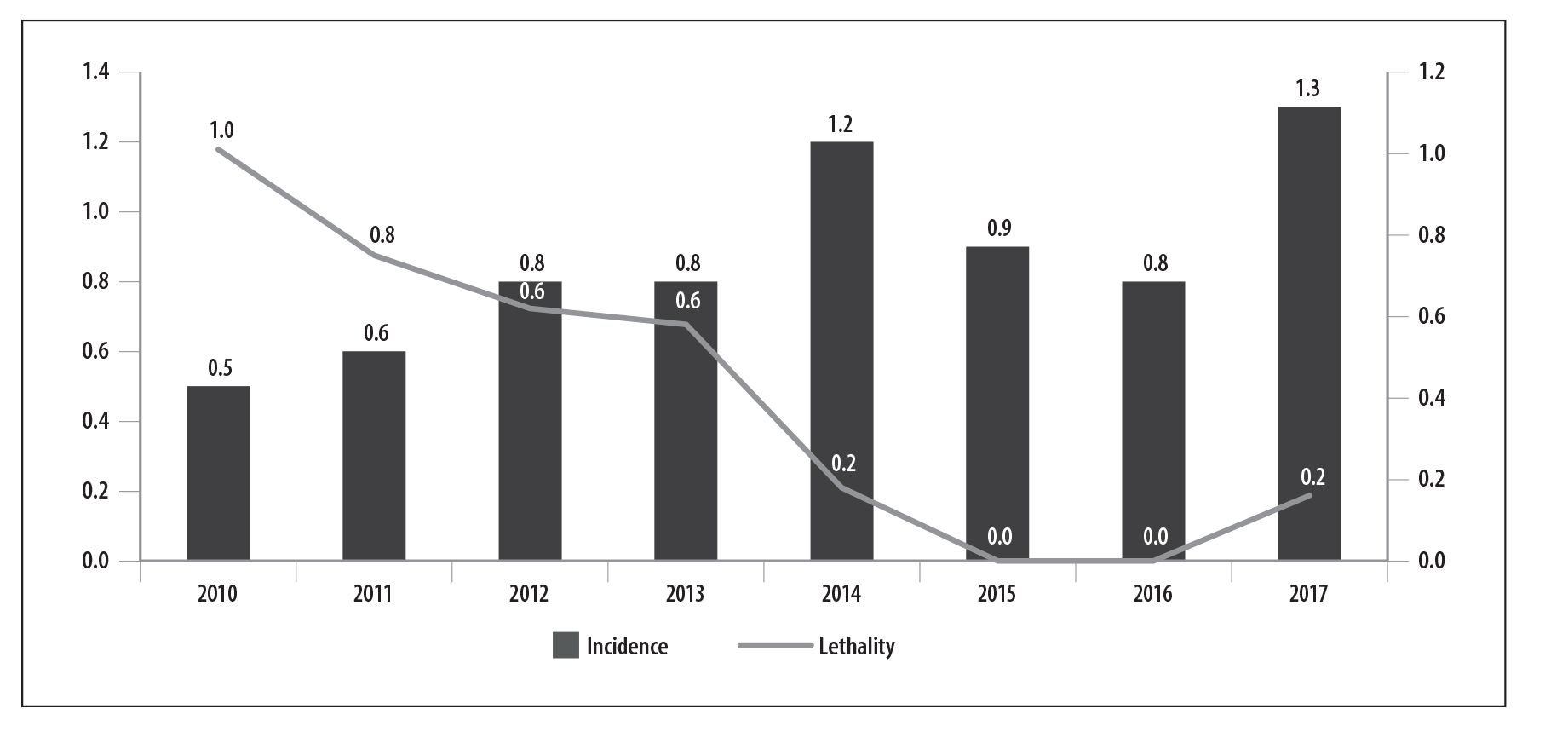Abstract
Objective:
to describe the epidemiological profile of scorpionism and to investigate factors associated with case severity in the Far South of Bahia, Brazil.
Methods:
this was a descriptive study using data on scorpion accidents reported on the Notifiable Health Conditions Information System (SINAN) from 2010 to 2017; odds ratios (OR) were calculated to investigate factors associated with severe cases.
Results:
3,055 cases were reported, of which 411 (13.5%) were severe and included 10 deaths; highest incidence occurred in 2017 (1.3 per 1,000 inhabitants); cases predominated in rural areas (62.5%), among males (70.1%), those aged 20-49 years (51%), and Black people (84%); 22.7% of those stung received serotherapy; severe cases were more frequent among children under 15 years old (OR=3.26; 95%CI 2.55;4.74), and people stung in rural areas (OR=1.40; 95%CI 1.10;1.78).
Conclusion:
scorpionism incidence increased; case severity was associated with younger people and occurrence in rural areas.
Keywords:
Epidemiology, Descriptive; Neglected Diseases; Scorpion Stings

 Thumbnail
Thumbnail
 Sources: Notifiable Health Conditions Information System (SINAN); Brazilian Institute of Geography and Statistics (IBGE).Note: incidence per 1000 inhabitants.
Sources: Notifiable Health Conditions Information System (SINAN); Brazilian Institute of Geography and Statistics (IBGE).Note: incidence per 1000 inhabitants.